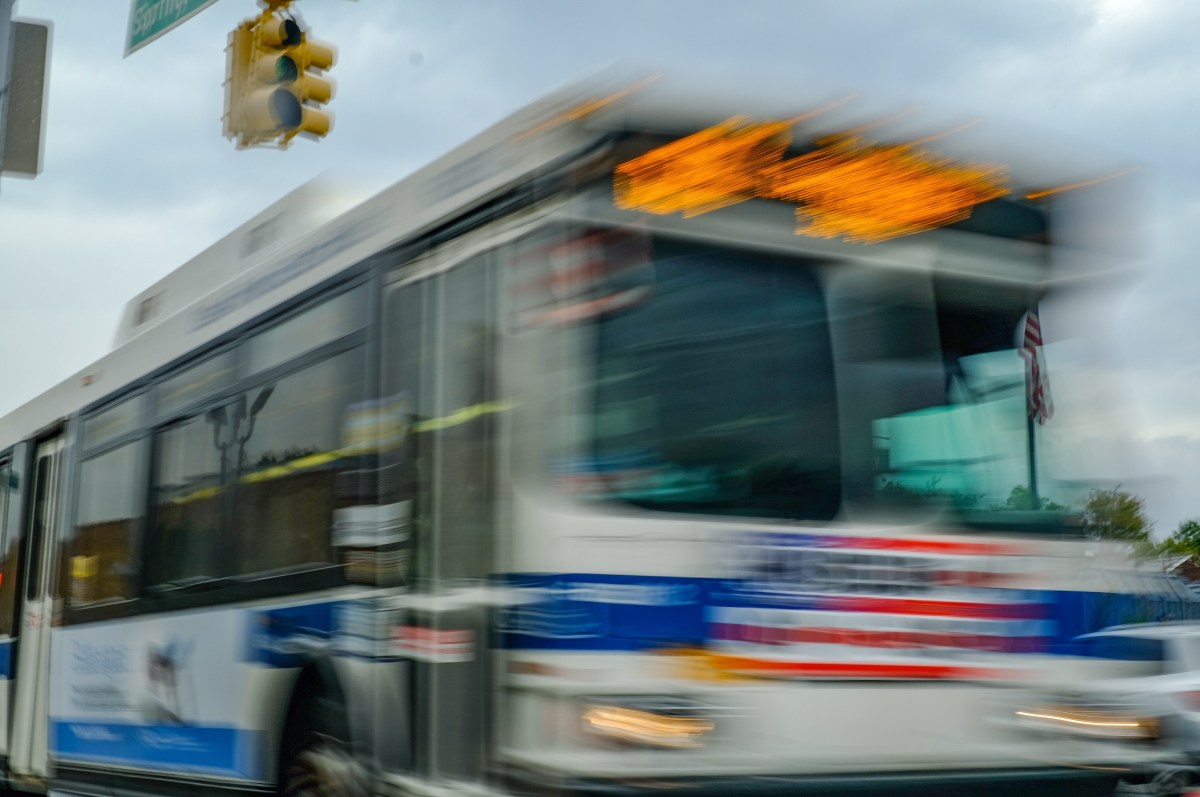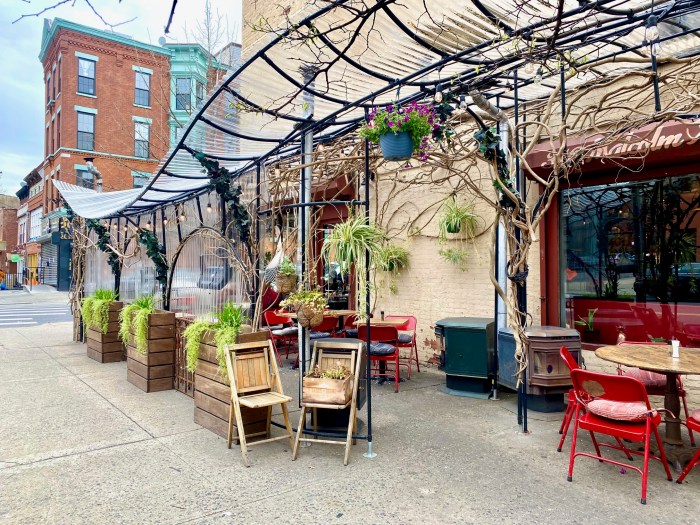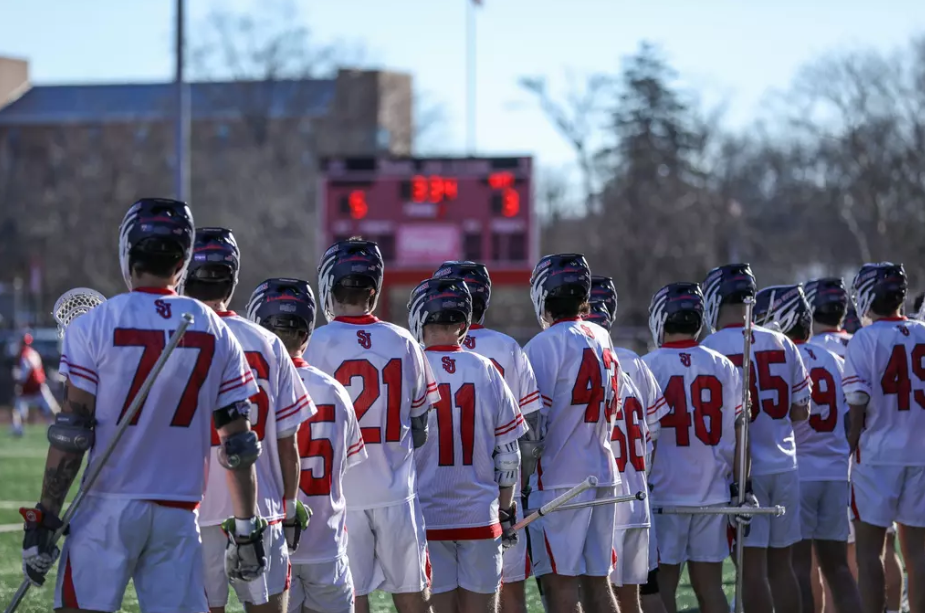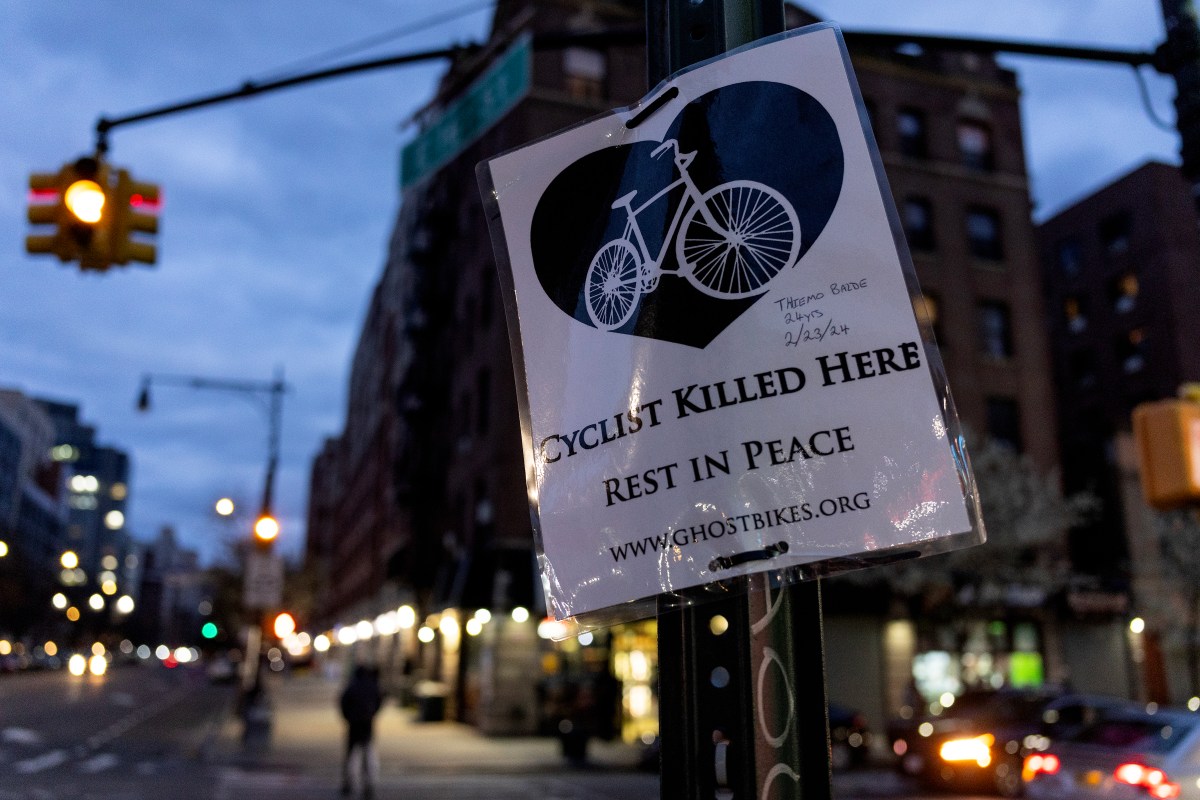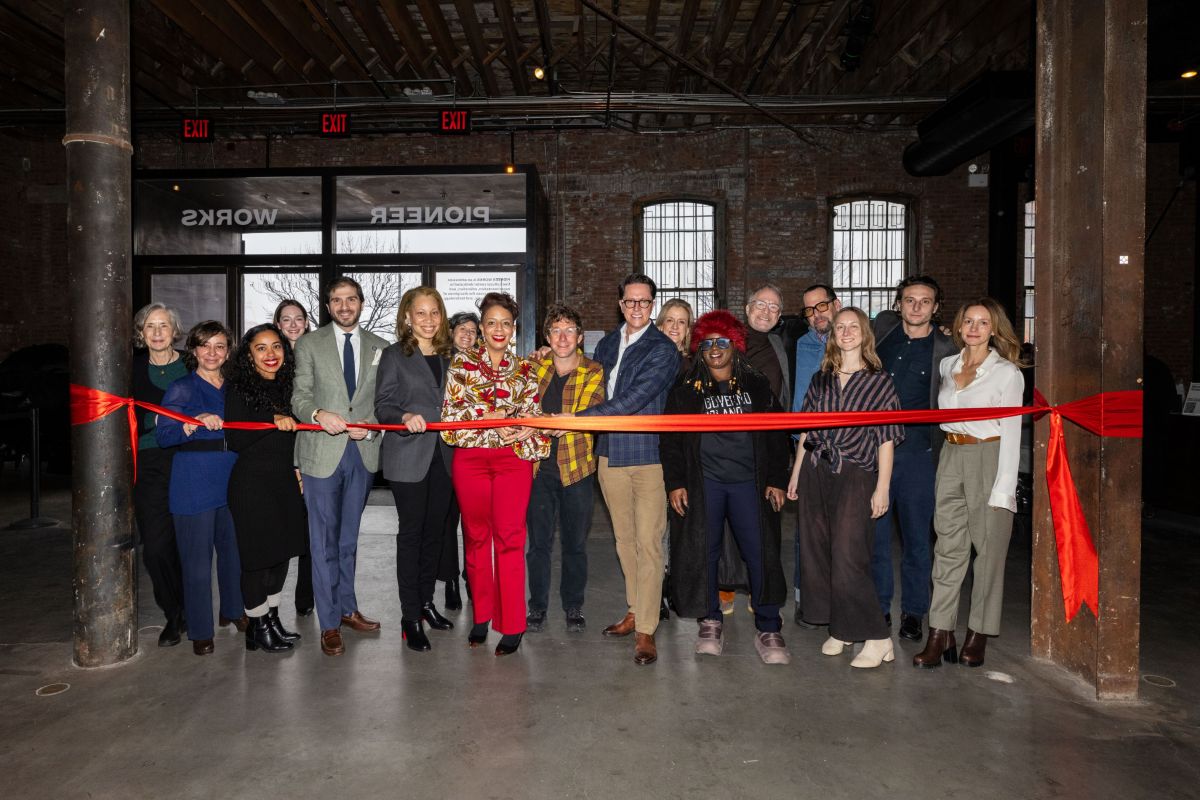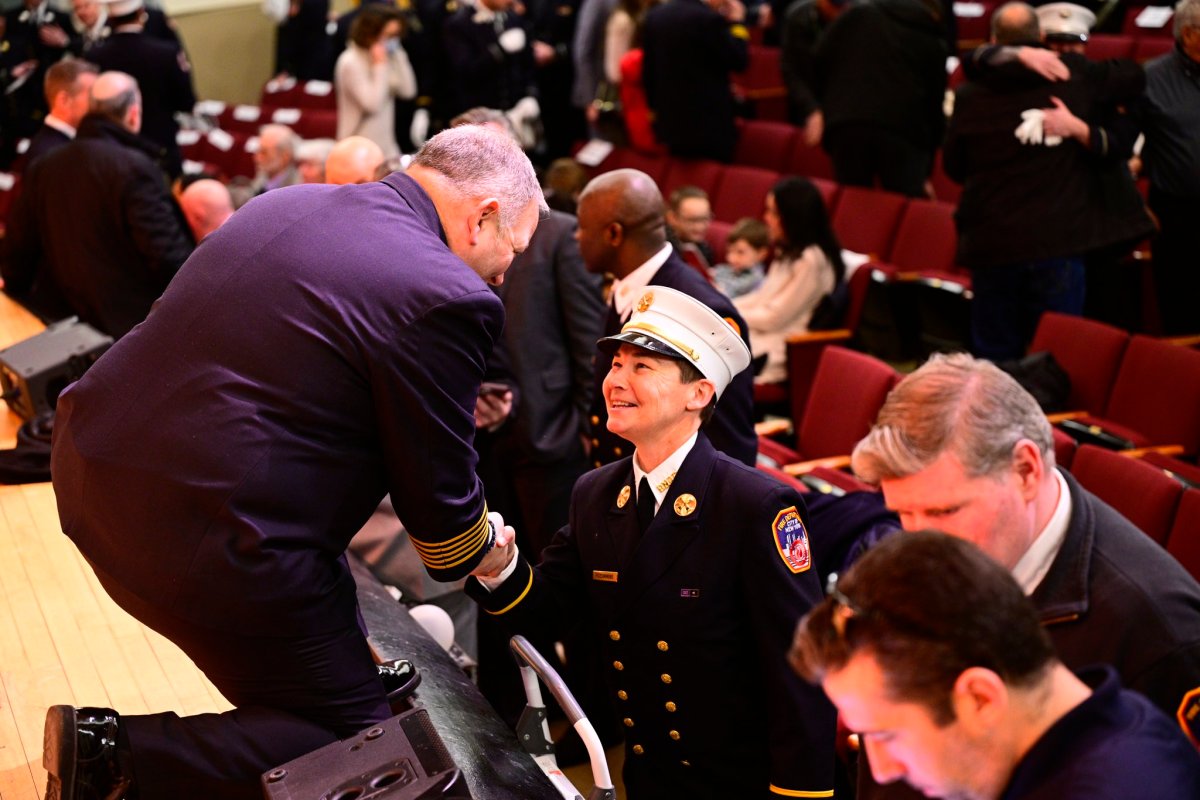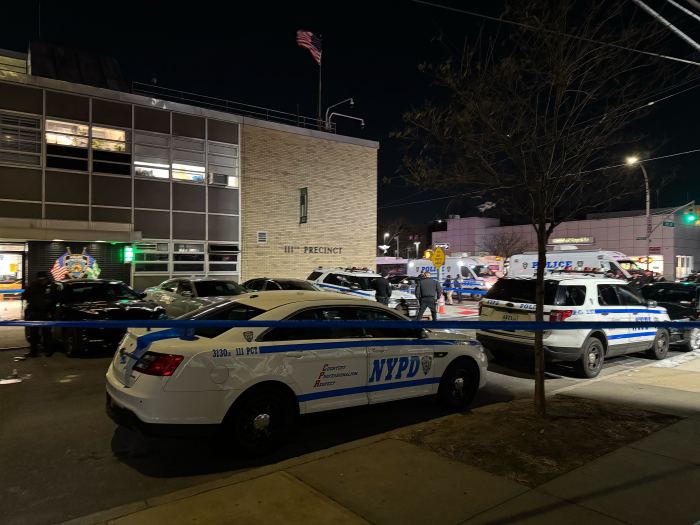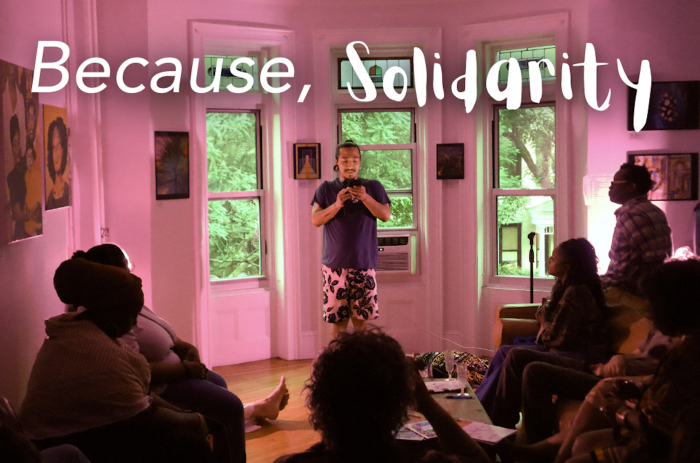Stay out of the way of these buses — cars traveling in the designated B44 bus only lanes in Brooklyn will be issued a summons with cameras mounted on the commuter vehicles themselves.
In October, the B44 bus route in Brooklyn began issuing warnings, but now $50 summonses to cars in the dedicated lanes and since the pilot, average speeds on the route have increased by 17 percent.
“Bus lanes have proven to improve bus speeds and traffic flow for everyone, and proper enforcement is helping to retain those gains and further improve service,” said Craig Cipriano, acting MTA Bus Company president. “Our message is loud and clear: Bus lanes are for buses.”
The fines took effect on Dec. 30, with continued violations within the same 12-month period costing drivers up to $100 for a second offense, $150 for a third offense, $200 for a fourth offense, and $250 for a fifth violation, according to the MTA.
City Transportation Commissioner Polly Trottenberg says advancing the program will lead the de Blasio administration to their ultimate goal of increasing bus speeds by a total of 25 percent across the city. Wait times on the B44 line have also improved by 3 percent through MTA’s Wait Assessment over last year, the agency claims. The wait assessment score for the route now stands at 78.1 percent.
“Combined with DOT’s overhead cameras, NYCT’s ABLE camera system is making bus rides faster and more reliable,” Trottenberg said. “More automated enforcement on the B44 will help keep riders on Brooklyn’s second-busiest bus route moving between Williamsburg and Sheepshead Bay.”
Despite clear increases in service for bus riders, political backing has gone in favor of cars in recent months as Mayor Bill de Blasio announced the effort to prioritize service for public transit on roadways.
In 2019, de Blasio included Fresh Pond Road in Queens as part of his Better Buses Action Plan. Traffic within the corridor between Metropolitan Avenue and Myrtle Avenue in Ridgewood experienced a thrilling average speed of 3 miles per hour and drivers had a net increase in parking during off hours for the bus lane.
Opposition for the bus lanes came to the surface at meetings for Community Board 5, the courtroom and in a press conference highlighting the concerns of business owners.
Five months before the mayor launched the 14th Street Busway, a coalition of residents and business owners were not feeling heard by the administration, amNY reported at the time. Transit advocates and commuters, however, were dazzled by the speed at which they could traverse the width of Manhattan during the rollout three months ago, as reported in a follow-up.
Some transit advocates have argued that opposition to prioritization of buses impacts low income New Yorkers of color more than any other demographic with the majority of straphangers earning $28,000 per year and 86 percent being minorities.
Bus lanes and photo enforcement have improved speeds 36 percent on First and Second Avenue in Manhattan, according to the MTA. Speeds have increased on crosstown lanes too, such as 17 percent on 96th Street.
Buses are roaring on Avenue J in Brooklyn by 16 percent, and by as much as 40 percent near the Manhattan approach of the Hugh L. Carey Tunnel, the MTA said.



